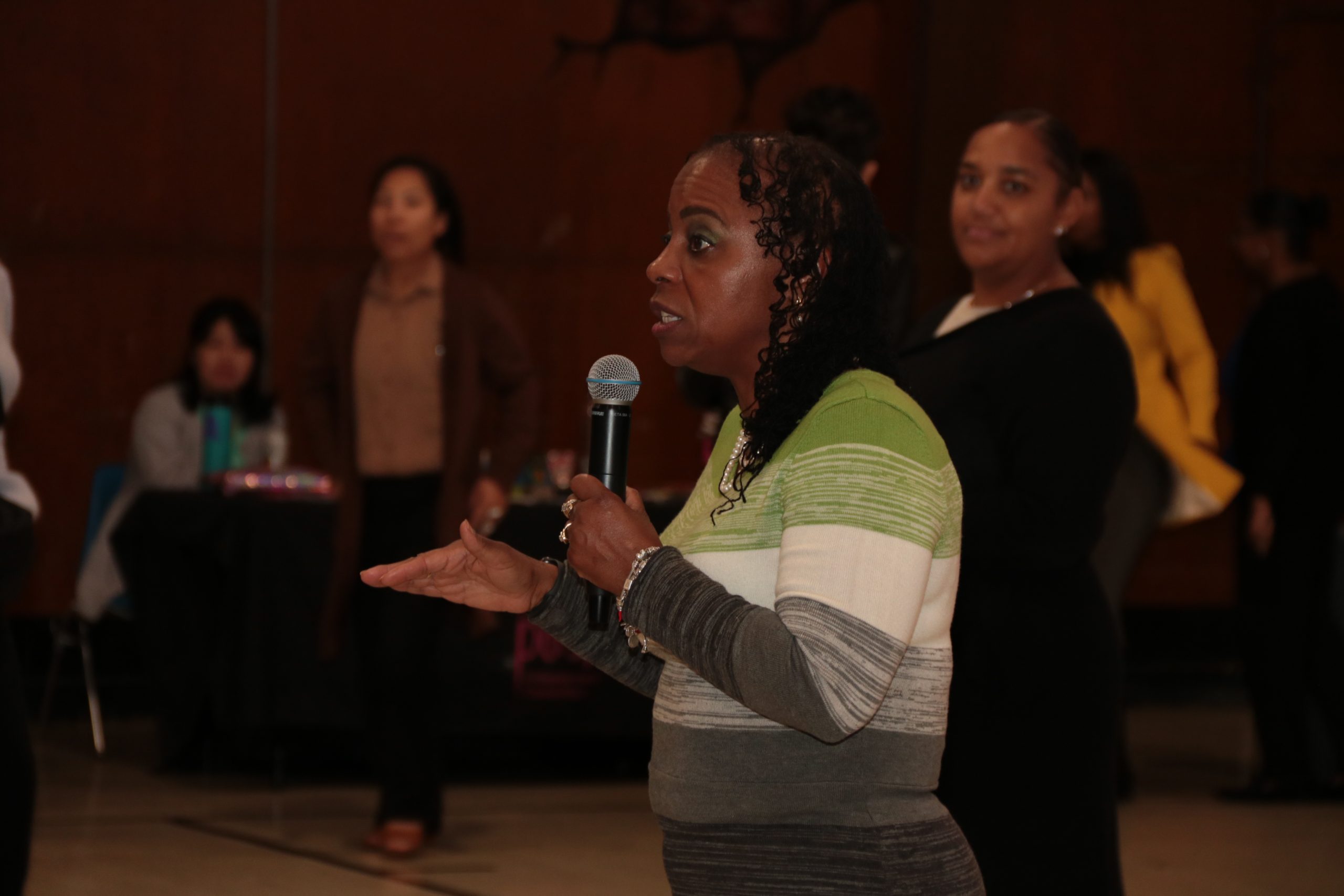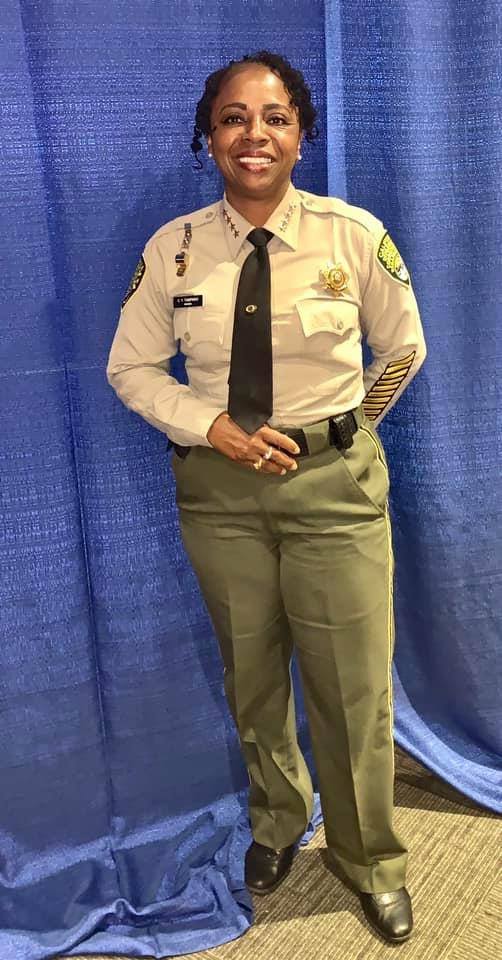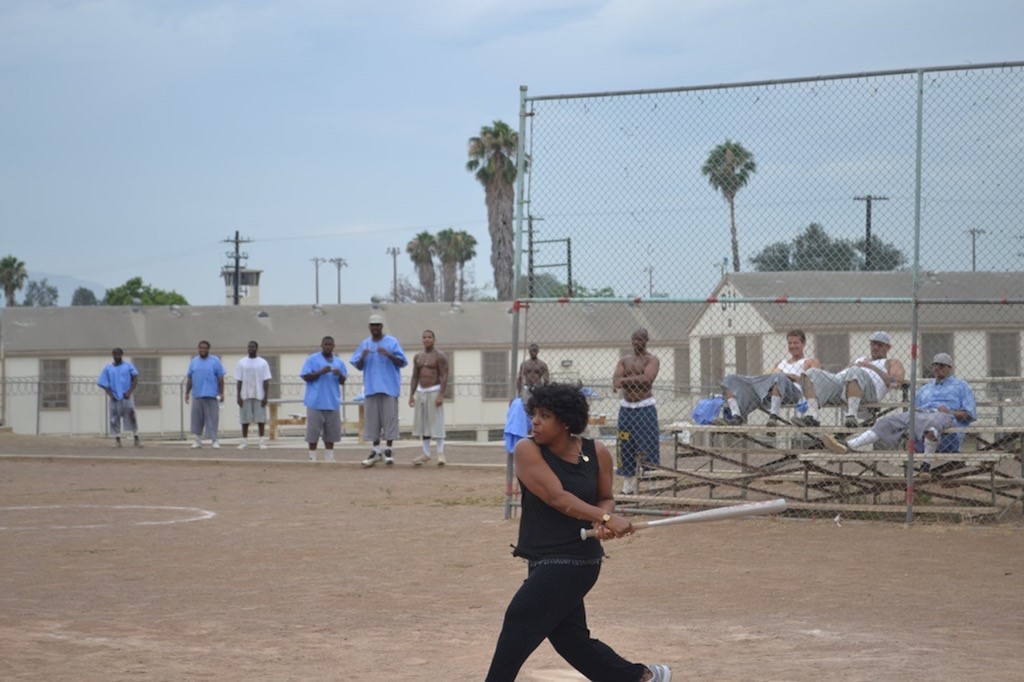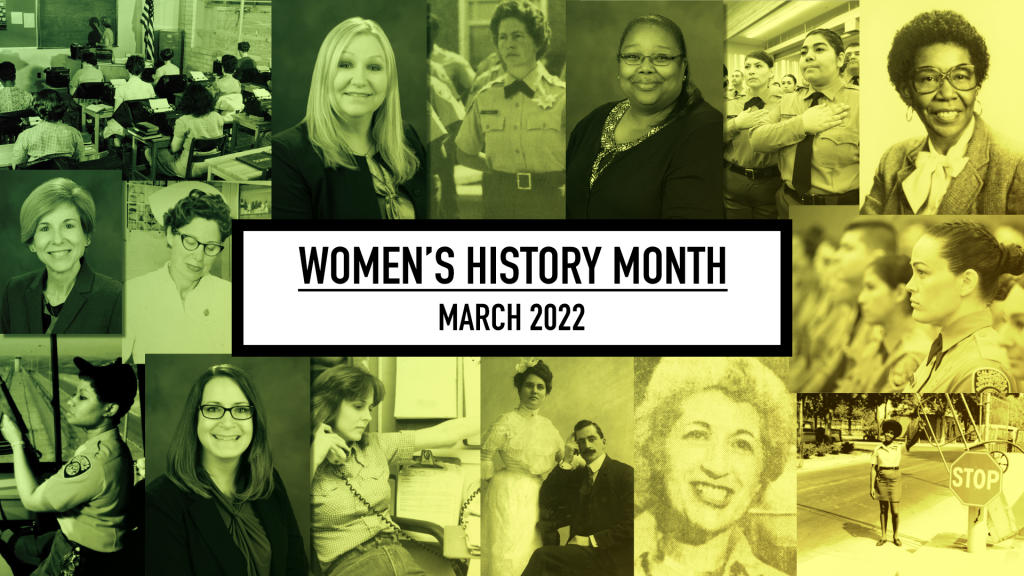Now mentoring new wardens, Tampkins opens up about 35 years on the job
Looking back at a career spanning 35 years, retired Warden Cynthia Tampkins said joining the department was the best choice she ever made. She retired late last year as the warden at California Rehabilitation Center.
After graduating college with a degree in economics, Tampkins had two choices – work in the banking industry or join her sister at the California prison system. With a baby to think about, she chose the best option for her family.
“I thought I wanted a career in banking,” she recalls. “My sister was a department recruiter at the time and recruited me. Better pay and benefits were the deciding factors. As a correctional officer, I earned more than my counterparts in the banking field, so it was a no-brainer for me.”
When she began in 1986, there were few women in the department and none in leadership roles.
“Now women seem to reach a certain level in the prison and stop promoting. I really believe it is because women are the nurturers and decide we must stay at home with the children,” Tampkins said. “I tell women that we can have both a career and family. But, we must surround ourselves with a village of people who can assist us in our efforts.”
Male-dominated field was challenging in 1980s
Tampkins notes there was resistance to women working as correctional officers.
“When I started in the Department in 1986, men did not want or believe women should work as officers. They were very vocal about it as well. Our uniform was different, since we wore skirts. Sexual harassment was rampant by the incarcerated population and male staff. Back then it was not really taken seriously, and rarely reported,” she recalls.
Choice positions were given to men, leaving women officers with jobs no one else wanted.
“Supervisors ensured you worked the dorms and relegated women to the lesser desired positions. They then placed men in the better positions,” she said.
The department responded to the allegations, creating new standards and training.
“To alleviate this problem, the Department began to take sexual harassment seriously and created a zero-tolerance policy,” Tampkins recalls. “Post-and-bid was implemented which gave officers the ability to select better positions. In addition, in-service training provided better education regarding sexual harassment and treatment of people.”
Tampkins says diversity is still an issue
Watch a video interview with Tampkins (shot pre-pandemic by Cameron Applegate, TV Specialist):
While Tampkins acknowledges positive changes have been made, more still needs to be done regarding workforce diversity.
“I came into the Department during the affirmative action period. During that time, people believed the only way a person of color was promoted to a supervisor position was due to affirmative action and not because of their education, ability, and or skill set,” she said. “I studied and worked hard for every position I was promoted to and I know others are doing the same. However, it still appears we have a lack of people of color in executive level positions.”
She credits new diversity efforts with improving the overall situation.
“I still have hope I will see a change in the Department’s diversity including women in all classifications. CDCR has initiated the Government Alliance on Race and Equity program and are recruiting differently, ensuring all people have an equal opportunity to have a career in the Department.”
Mentors help employees promote
“I had a host of mentors,” Tampkins recalls. “Some were silent because they were not aware they were my mentors. I tried to take the positive traits from everyone I could because my desire was always to be a Warden.”
She said Correctional Counselor II Ruby Piazza was her first mentor, showing her how to professionally dress. She also credits Wardens Jeannie Anderson, JoAnn Gordan, Mike Poulas, and Aref Fakhoury, as well as Chief Deputy Warden Richard Alvardo, and Retired Annuitant Warden Tim Busby.
“They showed me professionalism, treatment of people, and good management/supervision skills,” she said.
Professional attitudes and practices help improve public perception of correctional workers.
“People seem to believe the old narrative that correctional officers are simply guards and that the employees are uneducated. What they do not understand is that a prison is like a city. We have every career, employing some of the most highly educated staff you can imagine. We treat, educate, rehabilitate, and protect society by keeping the inmate incarcerated until his release date,” she said.
Three memorable moments
“When I was nominated and received the Executive of the Year award, I felt euphoric and honored. The award showed how much the Department respected my efforts to operate the institution. However, I really felt the award was to be shared by all who worked at CRC because anything we did was a team effort,” she said.
To show appreciation to employees, Tampkins and her executive team sometimes prepared them breakfast.
“My executive team and I would wake up early in the morning and put on aprons to prepare meals for our staff, all to show them we care and how much they mean to us. California Rehabilitation Center has some of the best staff any Warden could ask for.”
Lastly, she said getting a bachelor’s degree program inside the prison was a major milestone for the department and a moment of pride to help cap off her long career. The program is provided by Pitzer College.
California Rehabilitation Center is different
“Our mission is in our name: Rehabilitation,” Tampkins said. “We have always had the desire and programs to treat and rehabilitate prisoners. We safely housed and provided programs to both female and male inmates. CRC was the only institution to transition, not without effort, the entire institution to a Non-Designated Programming Facility. CRC is the only prison that has a BA program where students from the community sit side-by-side with inmates to obtain degrees from Pitzer College.”
Tampkins takes pride in the efforts made daily by prison staff and leadership.
“The Department of Corrections was one of the best choices I made in my life. I have had a good career and being the Warden of CRC never felt like a job,” she said. “I loved the position and the institution, but most of all, the employees.”
By Don Chaddock, Inside CDCR editor



See more stories highlighting CDCR/CCHCS staff.
Watch more videos of women in CDCR.
Follow CDCR on YouTube, Facebook, X (formerly Twitter). Listen to the CDCR Unlocked podcast.

